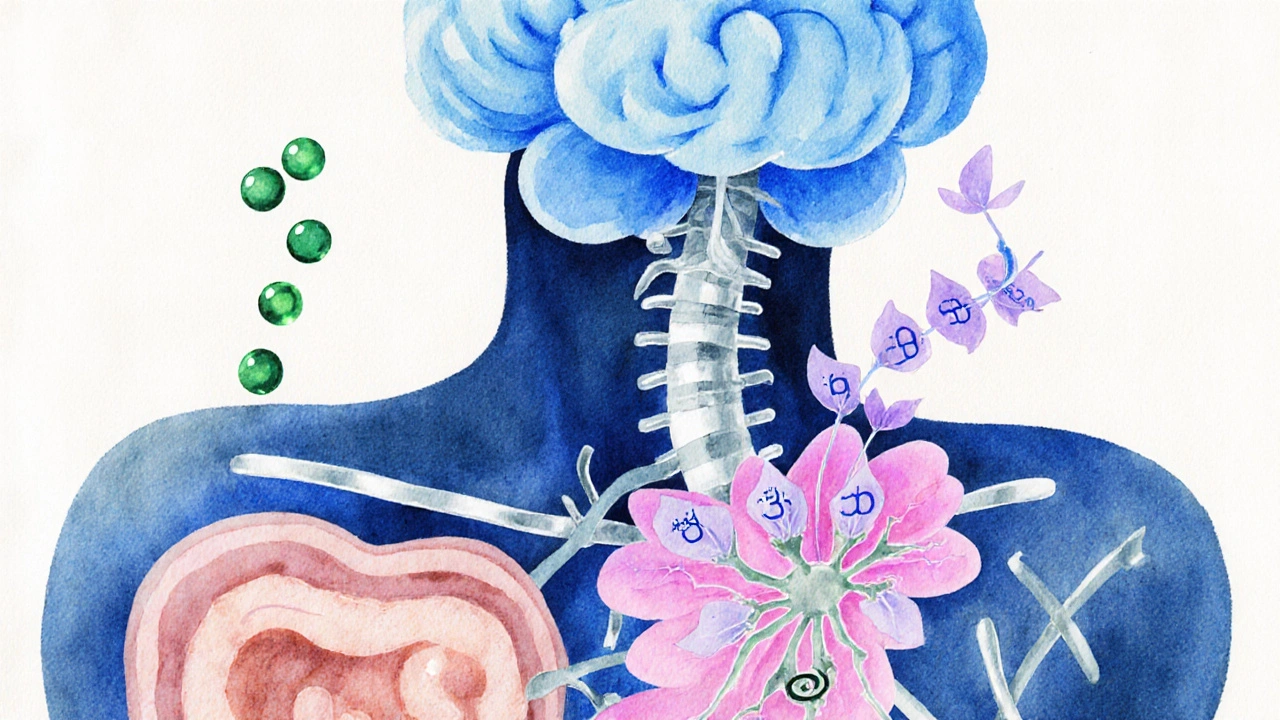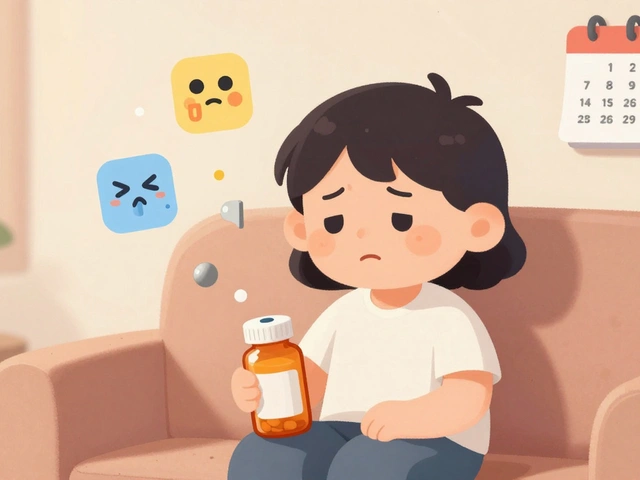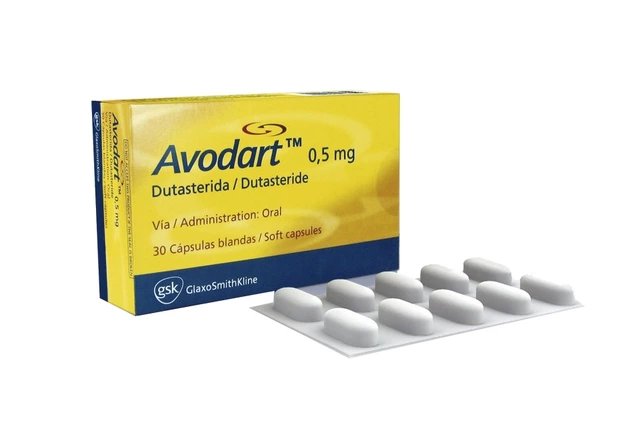Fibromyalgia Symptom Flare Predictor
Enter your current situation to estimate potential symptom flare severity. Based on estrogen, serotonin, and lifestyle factors discussed in the article.
Key Takeaways
- Low estrogen and disrupted serotonin pathways can worsen fibromyalgia pain, fatigue, and mood swings.
- Hormone‑related fluctuations often explain why symptoms flare during menstrual cycles, menopause, or stress.
- Targeted lifestyle moves-balanced diet, regular sleep, low‑impact exercise-support both estrogen and serotonin balance.
- Prescription options such as SNRIs, low‑dose naltrexone, or carefully monitored hormone therapy can improve quality of life.
- Monitoring hormone levels and keeping a symptom diary helps clinicians tailor treatment faster.
Living with Fibromyalgia is a daily battle against widespread muscle pain, sleep disruption, and mood swings. While doctors often focus on pain relievers and physical therapy, many patients notice that their symptoms rise and fall with hormonal changes-think menstrual cycles, pregnancy, menopause, or even stressful weeks at work. Two chemicals sit at the heart of that roller‑coaster: Estrogen and Serotonin. Understanding how they interact with the nervous system and immune response sheds light on why some treatment plans work for one person and fall flat for another.
What Is Fibromyalgia?
Fibromyalgia is a chronic disorder characterized by heightened sensitivity to pain, fatigue, cognitive fog (often called "fibro‑brain fog"), and widespread tenderness. It affects roughly 2-4% of the adult population, with women comprising about 80% of cases. The condition is linked to an overactive pain‑processing network in the brain and spinal cord, sometimes called central sensitization. Key biomarkers include elevated levels of substanceP, reduced gray‑matter volume, and dysregulation of the HPA Axis (the hypothalamic‑pituitary‑adrenal stress system).
Hormones 101: Estrogen and Serotonin Basics
Both estrogen and serotonin are technically hormones, but they belong to different families. Estrogen is a steroid hormone produced mainly by the ovaries, placenta, and, in smaller amounts, fat tissue. It regulates reproductive cycles, bone density, skin elasticity, and, crucially for fibromyalgia, pain perception and sleep architecture.
Serotonin, on the other hand, is a neurotransmitter derived from the amino acid tryptophan. Around 90% of serotonin resides in the gut, while the brain controls mood, appetite, and pain modulation. Low serotonin levels are a well‑known factor in depression and anxiety, conditions that frequently co‑occur with fibromyalgia.

How Estrogen Influences Fibromyalgia Symptoms
Estrogen interacts with three main pathways that matter for fibromyalgia:
- Modulating pain receptors: Estrogen binds to estrogen‑receptor‑beta (ERβ) on dorsal‑root ganglion neurons, dampening the release of nociceptive chemicals such as prostaglandins.
- Regulating sleep: Higher estrogen levels increase rapid‑eye‑movement (REM) sleep stability, reducing the non‑restorative sleep that fuels pain amplification.
- Balancing the immune system: Estrogen shifts cytokine production toward anti‑inflammatory interleukin‑10, lowering systemic inflammation that can sensitize pain pathways.
When estrogen drops-during the late luteal phase, perimenopause, or after oophorectomy-patients often report a spike in joint stiffness, migraine‑like headaches, and heightened fatigue. A 2023 longitudinal study of 312 women with fibromyalgia found that a serum estradiol level below 30pg/mL correlated with a 1.8‑fold increase in self‑reported pain scores.
Serotonin’s Role in Pain, Mood, and Sleep
Serotonin influences fibromyalgia through three complementary mechanisms:
- Descending inhibition: Serotonergic neurons in the raphe nuclei send signals down the spinal cord to suppress incoming pain signals. Low serotonin weakens this brake.
- Mood regulation: Serotonin deficiency is a hallmark of depression and anxiety, both of which amplify perceived pain intensity.
- Gut‑brain axis: About 30% of serotonin in the body is produced by enterochromaffin cells. Dysbiosis can reduce gut‑derived serotonin, triggering both gastrointestinal discomfort and central pain sensitization.
A 2022 meta‑analysis of 19 randomized controlled trials showed that selective serotonin‑norepinephrine reuptake inhibitors (SNRIs) reduced average fibromyalgia pain scores by 1.2 points on the 0‑10 visual analog scale, outperforming placebo by a statistically significant margin.
Clinical Evidence Linking Hormones to Fibromyalgia
Multiple lines of research converge on the hormone‑fibromyalgia connection:
| Hormone | Key Symptom Affected | Typical Change During Flare | Evidence Snapshot |
|---|---|---|---|
| Estrogen | Joint stiffness & migraine | Drop of >15% in serum estradiol | 2023 cohort, n=312, OR=1.8 for high pain |
| Serotonin | Fatigue & mood swings | Reduced central 5‑HT turnover (measured by PET) | 2022 meta‑analysis, SNRIs ↓ VAS by 1.2 |
Beyond these two, other hormones-cortisol, thyroid hormones, and progesterone-also play supporting roles. For instance, chronic cortisol elevation can blunt serotonin synthesis, while low progesterone may further destabilize estrogen balance.

Managing Hormonal Factors: Lifestyle, Supplements, and Medications
Because hormones are dynamic, a multi‑pronged approach works best.
1. Nutrition and Gut Health
- Eat a Mediterranean‑style diet rich in omega‑3 fatty acids (salmon, flaxseed) to promote anti‑inflammatory pathways and support estrogen conversion.
- Include tryptophan‑rich foods-turkey, pumpkin seeds, tofu-to boost serotonin precursors.
- Consider a probiotic with Lactobacillus rhamnosus and Bifidobacterium longum to improve gut‑derived serotonin production.
2. Exercise that Balances Hormones
- Low‑impact aerobic work (walking, swimming) 3-4 times a week improves estrogen sensitivity and lifts serotonin through endorphin release.
- Yoga and tai chi help regulate the HPA axis, lowering cortisol spikes that otherwise suppress serotonin.
3. Sleep Hygiene
- Maintain a consistent bedtime, keep the bedroom cool, and limit blue‑light exposure after 8p.m. Quality sleep restores estrogen rhythms and serotonin reuptake efficiency.
4. Targeted Supplements
- Vitamin D (1000‑2000IU daily): Supports both estrogen metabolism and serotonin synthesis.
- Magnesium glycinate (300mg): Relieves muscle cramps and improves sleep, indirectly stabilizing hormone release.
- 5‑HTP (50‑100mg): May raise central serotonin, but should be used under physician supervision to avoid serotonin syndrome.
5. Prescription Options
- SNRIs (duloxetine, milnacipran): Dual action on serotonin and norepinephrine, proven to reduce pain and fatigue.
- Low‑dose naltrexone (LDN): Modulates microglial activation and can indirectly improve hormone balance.
- Bioidentical estrogen therapy: For perimenopausal women with documented low estradiol, transdermal patches can ease pain spikes-but only after thorough risk assessment.
6. Hormone Monitoring
Ask your clinician to order a baseline panel that includes estradiol, progesterone, cortisol, and a serotonin metabolite (5‑HIAA) if symptoms fluctuate with menstrual cycles. Tracking results alongside a symptom diary helps pinpoint patterns.
Quick Checklist for Hormone‑Focused Fibromyalgia Management
- ✅ Keep a daily log of pain scores, mood, sleep quality, and menstrual phase (if applicable).
- ✅ Schedule blood work at least twice a year to check estrogen, cortisol, and vitaminD levels.
- ✅ Incorporate 30minutes of low‑impact cardio most days.
- ✅ Add a probiotic and omega‑3 supplement to your regimen.
- ✅ Review medication options with a pain specialist-SNRIs or LDN may be first‑line.
- ✅ Discuss hormone therapy only if you’re post‑menopausal or have confirmed low estradiol.
Frequently Asked Questions
Can estrogen therapy cure fibromyalgia?
Estrogen therapy isn’t a cure, but for women with proven low estradiol, transdermal estrogen can reduce pain flares, improve sleep, and lessen migraine‑type headaches. Benefits vary, and therapy must be weighed against cardiovascular and cancer risks.
Why do my fibromyalgia symptoms worsen during my period?
During the luteal phase, estrogen drops while progesterone peaks, and serotonin turnover can also dip. Those hormonal shifts increase pain sensitivity and fatigue, which many women report as pre‑menstrual worsening.
Are there natural ways to boost serotonin without medication?
Yes. Regular sunlight exposure, aerobic exercise, tryptophan‑rich foods, probiotics, and adequate sleep all raise serotonin levels naturally. Some people also find that mindfulness meditation improves mood and pain perception.
How does stress affect my hormone levels and fibromyalgia?
Chronic stress triggers the HPA axis to release cortisol continuously. High cortisol suppresses estrogen synthesis and reduces serotonin reuptake efficiency, creating a feedback loop that intensifies pain and fatigue.
Should I get my hormone levels tested even if I’m not a woman?
Men can also experience hormone‑related fibromyalgia flares, especially when testosterone or estrogen levels dip due to aging, obesity, or certain medications. A basic panel that includes estradiol, testosterone, and cortisol can uncover hidden imbalances.
Understanding the tug‑of‑war between estrogen and serotonin gives you concrete levers to pull-diet tweaks, sleep habits, targeted meds, and, when needed, hormone therapy. By monitoring the ebb and flow of these chemicals, you can move from reacting to flares toward a steadier, more manageable day‑to‑day life.






Comments(10)